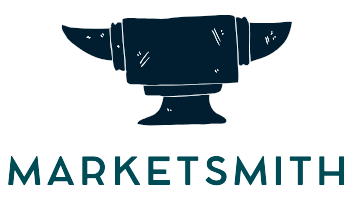Master Advanced SEO Techniques to Dominate Google Rankings in 2025

Google holds the highest market share worldwide, at 91.54% (source: Statcounter). It incentivises businesses to adapt their Advanced SEO strategies to Google’s evolving standards.
Staying competitive in search engines requires more than fundamental methods. As we approach 2025, online engagement and visibility are more competitive than ever. Zero-click searches and AI-driven search algorithms redefine user experiences, driving businesses to implement innovative SEO tactics to maintain their competitive advantage.
This article delves into the dramatic trends redefining the SEO landscape and provides concrete techniques for adapting and thriving. Use artificial intelligence and semantic search to set your brand apart and obtain top Google rankings.
Understanding the Advanced SEO Landscape
The SEO landscape in 2025 will undergo a substantial transformation, necessitating methods that go beyond the fundamentals to succeed in a competitive digital field. With technological breakthroughs such as AI, voice search, and zero-click search changing user behaviours and expectations, brands must utilise modern SEO methods to remain visible and relevant.
Key Shifts in the SEO Landscape
SEO generates over 1,000% more web traffic than organic social media, with Google organic search accounting for 57.8% of worldwide online traffic. (Sources: BrightEdge, Sparktoro)
The conventional search environment is changing as search engines, notably Google, increasingly rely on AI-powered features such as the Multitask Unified Model (MUM) and Search Generative Experience (SGE). These innovations promote conversational questions and immediate responses, radically altering user behaviour and minimising dependency on click-throughs.
The trends influencing SEO include:
- AI integration: It enables personalised content suggestions and intent-based search results.
- User Experience: Mobile-first indexing and Core Web Vitals remain essential ranking criteria.
- Zero-Click Search: Optimising for highlighted snippets and local packs is critical for visibility.
Note: Featured snippets account for 12.3% of all search queries (Source: Ahrefs). Thus, optimising content for zero-click results is critical to immediately answering popular user inquiries.
Evolving Search Dynamics
Algorithm adjustments, such as the Helpful Content Update and improvements to user experience metrics, highlight the necessity of producing high-quality, user-centric material. SEO in 2025 will focus on more than just keywords and backlinks.
- Semantic SEO involves aligning content with user purpose and context using sophisticated approaches such as schema markup and topic grouping.
- Technical precision focuses on fast load times, safe surfing, and mobile responsiveness.
- Google’s E-E-A-T framework remains very important for rankings. Businesses must focus on original, authoritative content that attracts people and algorithms.
The following sections examine concrete and cutting-edge techniques for helping brands dominate Google rankings and grow in an ever-changing digital landscape.
Key Advanced SEO Techniques in 2025
SEO continues to change, necessitating an innovative approach beyond traditional strategies like keywords and backlinks. Brands must use advanced SEO techniques in line with contemporary user expectations, search engine behaviours, and cutting-edge technology.
Below, we’ll explore key SEO tactics, such as AI-driven algorithms and semantic SEO, optimal user experience, and E-E-A-T principles.
- Leveraging AI and Machine Learning in SEO
Artificial intelligence and machine learning have transformed search engine optimisation, offering critical insights, enhancing productivity, and enabling adaptability to search engine evolution.
Earning top ranking is critical since the #1 Google search result receives approximately 27.6% of all visits (Source: Backlinko). Advanced SEO Techniques such as optimising conversational AI and improving dynamic rich snippets can help increase click-through rates and engagement.
AI-Driven Search Engine Algorithms
Search engines like Google increasingly use AI and ML to understand user intent better and offer more relevant results. NLP (Natural language processing) and deep learning technologies analyse large datasets to forecast consumer demands with unparalleled precision.
For example, a query like “restaurants in Paris” returns specialised recommendations, ratings, and curated guides. Machine learning algorithms that account for user location and preferences are instrumental. SEO practitioners must optimise their content for AI-powered SERPs containing direct responses, suggestions, and engaging visualisations.
Conversational questions and AI-rich snippets have become a top goal.
Enhancing Content Creation with AI
Artificial intelligence solutions such as ChatGPT, Jasper, and Semrush ContentShake have altered publishing processes, allowing businesses to create meta descriptions, blogs, and keyword-focused outlines swiftly. However, the emphasis has changed toward human-AI collaboration.
AI helps with first drafts and competitive analysis. However, human editors improve writing for sentimental resonance, brand symmetry, and authenticity. Businesses that win in SEO prioritise content that combines data-driven insights with distinctive viewpoints, setting them apart from generic AI outputs.
Personalised Website Optimisation
AI-powered solutions offer comprehensive insights into website performance, allowing for real-time SEO improvement. For example:
- Semrush Copilot uncovers technical issues such as delayed page load times and missing tags.
- Machine learning algorithms analyse user behaviour indicators like bounce rates and offer tactics to increase engagement.
These improvements are beneficial for small firms, as they automate complex SEO processes and drive organic traffic without using significant resources.
Balancing AI’s Potential and Challenges
Despite its advantages, AI in SEO presents issues like algorithm transparency, possible biases, and risks of over-reliance. Businesses must mix AI efficiency with human innovation and critical thinking to achieve the best results.
Future-Proofing SEO Strategies
To succeed in this AI-driven environment, brands must:
- Use AI for data analysis. But remember that human knowledge will always stand out for narrative and user engagement.
- Optimise for conversational inquiries and interactive AI results.
- Focus on publishing authentic, high-quality content.
- Leveraging Semantic SEO
Semantic Search Optimisation has altered SEO by shifting the focus away from isolated keywords and toward identifying user intent, context, and subject connections.
Hummingbird, Google’s Knowledge Graph, and RankBrain are innovations that allow search engines to understand queries more humanistically, resulting in more relevant and exact results.
Why Semantic Search Matters?
Machine learning-driven insights provide a competitive advantage to websites optimised for semantic search. Unlike typical keyword matching, semantic search understands user intent and context.
Due to local linguistic variations, a query like “grinder shop near me” may return results for “sandwich shops”. Semantic SEO eliminates ambiguity, boosts user pleasure, and increases search engine efficiency.
Advanced Semantic SEO techniques
- Integrate Semantic Keywords: Include related terms to provide context, e.g., “espresso machines” for “coffee brewing.” Use tools like Google Autocomplete to find relevant terms.
- Topics Over Keywords: Build content clusters with a central pillar page (e.g., “Healthy Eating”) and linked subtopics (e.g., “Meal Planning for Weight Loss”) to improve navigation and authority.
- Enhance Content Depth: Studies indicate that the average word count of organic results on Google’s first page is 1,447 (Source: Backlinko), highlighting the significance of content depth in modern SEO. But cover topics comprehensively without fluff. For example, a blog on “sandwich recipes” could include “healthy options,” “regional styles,” and “quick ideas.”
- Optimise for Search Intent: Focus on aligning content to user intent rather than just keywords. Understanding why people search—whether for information, navigation, commerce, or transactions—allows you to produce targeted content that solves issues, increases engagement, and aligns with the user experience. Use tools, unambiguous frameworks, and intent-specific tactics to improve ranking and relevance.
- Use structured data: Use schema markup (e.g., recipe schema) to increase exposure and yield rich results. Tools like Google’s Structured Data Helper make installation easier.
- Optimise for Voice Search: Voice search results frequently include concise responses of roughly 29 words, typically derived from highlighted snippets (Source: Backlinko). To optimise for voice inquiry, embrace conversational language and create FAQs with short, straightforward responses. For featured snippet potential, respond clearly to queries such as “What’s the best coffee brewing method?”
- Update Outdated Content: Refresh material with semantic keywords and new trends, for example, incorporating “voice search optimisation” to an outdated SEO guidance page.
- Improve UX and technical SEO: Ensure that the site loads quickly, is mobile-friendly, has a clean design, and is structured logically. Semantic HTML improves search rankings and user experience.
- Optimising Content for E-E-A-T Framework
E-E-A-T (Experience, Expertise, Authority, Trustworthiness) is about high-ranking, influential, content-focused indexes. This framework prioritises user-first content based on genuine experience and proven knowledge, going beyond standard SEO methods. Furthermore, lifespan and consistency in quality are essential.
Experience: Adding Human Touch
Google favours firsthand experience in content development. Blogs that provide practical advice, unique content, and personal tales increase credibility.
For example, a travel blog with exceptional photographs and detailed experiences outperforms AI-generated material.
Creators should incorporate:
- Original media like photographs, films, or charts depicting usage or fieldwork
- Personal insights or unique challenges
- Transparent evidence with examples like receipts and before-and-after images
While AI techniques might help with data aggregation, true human expertise is invaluable. Integrating AI efficiency using personal insights provides authenticity.
Expertise: Establishing Authority in Your Niche
High-quality content, page experiences, and links are Google’s top three ranking factors (source: Search Engine Journal), thus rendering them critical components of any SEO plan. In YMYL (Your Money or Your Life) niches like finance or health, proving competence via in-depth knowledge and related certifications is fundamental.
Effective tactics include:
- Author bios to highlight your qualifications and achievements
- Use credible citations and other sources to substantiate claims
- Aim for topical focus to create authority with consistent niche-specific information
Consider this: A medical blog vetted by a certified doctor has significantly more credibility than generic advice.
Authoritarianism: Creating a Trustworthy Brand
Brands can earn sustainable authority by consistently offering high-quality content. According to an Ahrefs study, approximately 60% of the website’s rankings in Google’s top 10 results are more than 3 years old, emphasising the necessity of having authoritative and evergreen content.
Strategies include:
- Earn backlinks from trustworthy industry websites
- Offer comprehensive coverage to address all aspects of your niche
- Demonstrate credibility by highlighting testimonials, media references, and accreditations
- Collaborate with industry professionals or co-author guides to reinforce authority
Trustworthiness: A Foundation of Success
Trust combines openness, security, and confirmation of value. Key Steps include:
- Nurture transparency by providing contact information and explicit privacy policies
- Guarantee security by applying HTTPS and secure payment gateways
- Show social proof with user reviews and certificates
While AI can speed up content generation, human skill guarantees originality and relevance. Combine AI with firsthand experiences, bespoke visualisations, and practical examples to maximise effect.
- Mastering Advanced Technical SEO Techniques
Technical SEO optimises websites’ performance, accessibility, and exposure. Complex techniques like core web vitals optimisation, structured data, mobile-first design, and resilient site architecture are key to long-term success on Google.
Core Web Vitals and Page Speed
Core Web Vitals focuses on three critical metrics:
- Aim for loading speed (LCP) to be under 2.5 seconds
- Limit interactivity (INP) to 200 milliseconds
- Keep visual stability (CLS) below 0.1
To improve these metrics:
- Compress photos to make them load quicker
- Upgrade your hosting services
- Minimise JavaScript and save space for media to avoid layout adjustments
Page speed significantly affects bounce rates. Google reports that if load time goes from 1 to 3 seconds longer, bounce rates increase by 32%. Search Console, PageSpeed Insights, and Lighthouse are valuable tools for finding and fixing problems.
Mobile-First Optimisation
With Google’s mobile-first indexing, mobile-friendly optimisation is essential. Responsive design provides device compatibility. Meanwhile, fast-loading pages, touch-friendly interfaces, and lazy loading enhance user experience. Streamlined CSS improves responsiveness even further.
Google’s “Mobilegeddon” upgrade in 2015 included mobile-friendliness as a ranking criterion, leading unoptimised sites to lose prominence. Moreover, websites that score above 80% on Google’s Mobile-Friendly Test perform better. Meeting these expectations improves both engagement and rankings.
Structured Data and Schema Markup
Structured data (schema markup) allows search engines to read material and return rich results such as FAQs and ratings. Using JSON-LD, Google’s recommended standard enables a smooth interaction.
For example, e-commerce websites can employ variant schema to better present products. Tools such as Google’s Rich Results Test verify schema markup. This strategy boosts click-through rates, allows for voice search, and improves search engine results page (SERPs) exposure.
Optimising Site Architecture
Effective site architecture improves link equity, crawlability, and user experience. Here are a few ways you can optimise structure:
- Use shallow structures; pages must be accessible with three clicks
- To increase authority, group material into subject clusters
- Use clean URLs and breadcrumbs, enabling navigation
- Submit XML sitemaps using Google Search Console
- Control faceted navigation by turning off unneeded parameters
- Strengthen internal links via keyword-rich anchor text
- Merge related content or use canonical tags to explain ranking signals and address keyword cannibalisation
Advanced JavaScript SEO
JavaScript SEO guarantees that websites produced using JavaScript are search-engine friendly. Key tactics include:
- Optimise rendering for SEO-critical sites. Use Server-Side Rendering (SSR), whereas for interactive pages, use Client-Side Rendering (CSR).
- Enable crawling to avoid blocking.js and.css files in robots.txt.
- Use Google’s URL Inspection Toolkit to improve and validate indexing.
- Support internal linking efforts by employing static internal links and URLs to direct crawlers.
- Avoid hash URLs and use lazy loading with non-essential material.
Enhancing Security with HTTPS
Switching to HTTPS increases credibility and supports higher ranks. For instance, SEO Hacker earned 480% visibility gain upon implementation.
Secure connections safeguard user data while increasing engagement. Install SSL certificates and redirect all pages to HTTPS. To preserve integrity, monitor for mixed content problems.
Addressing Duplicate Content
Duplicate content can reduce link equity and mislead search engines, affecting your website’s results. CMS misconfigurations, URL variations, and content scrapers are common causes of this problem.
To solve these issues, try employing 301 redirects, canonical tags, and organised sitemaps. Tools such as Screaming Frog can successfully discover and resolve duplicate material.
Suppose a website has two pages with comparable content yet different URLs, like example.com/page-1 and example.com/page-2. Using a canonical tag with example.com/page-1 as the ideal version tells search engines that page-2 is a copy. This strategy solidifies link equity, ensuring it goes to the originating page and improving its ranks.
Zalando is a fascinating example of using canonical tags to build link equity, creating higher positions for essential pages. By borrowing one of their versions of each website page, they ensure that search engines prioritise the most critical content on the site.
- Optimising Local SEO for Multi-Location Businesses
Good local SEO for firms with many locations necessitates a focused strategy ensuring presence in all areas while maintaining a consistent brand identity.
Here are sophisticated strategies to optimise local SEO for multi-location enterprises by 2025:
Set up dedicated location pages
Each company location must have a separate page with distinct and optimised content. Include:
- Uniform and accurate NAP (Name, Address, Phone) information
- Google Maps with optimal location-specific keywords
- Service descriptions relevant to each site
- Testimonials and reviews from local consumers
- Unique content with staff profiles, local events, and area images.
These pages should be designed for simple navigation (e.g., yourdomain.com/locations/location-a) and optimised using schema markup to improve discoverability in search results.
Optimise Google Business Profile Listings
Claim and validate a GBP (Google Business Profile) for every location. Maintain uniformity in company names, classifications, and data such as hours of operation and photographs. Link all GBP listings to the appropriate location page on the website. Use GBP Insights to track customer interactions and fine-tune strategy.
Local Content Marketing
Create hyperlocal content specific to each place. It includes blog posts on community activities, case studies involving local clients, and guidelines highlighting location-specific services. Use this information to get backlinks from blogs, regional publications, and directories.
Consistency in Citations
Maintain consistency in business listings throughout web directories (such as Yelp, Bing Places, and Yellow Pages). Use tools like SEMrush Listing Management to monitor and edit citations across several platforms. Inconsistent information might lower rankings and mislead customers.
Encourage Location-Specific Reviews
Positive evaluations for each place may significantly increase trust and exposure. Leverage follow-up emails, on-site calls-to-action, or QR codes to encourage consumers to submit feedback. Respond to bad reviews promptly and professionally to defend your image.
Local Link Building
Earn local backlinks to increase the authority of each location page. Sponsor community events, collaborate with local bloggers, or participate in area-specific internet forums. Highlighting your engagement in local activities can help generate organic links.
Use Structured Data
Deploy structured data markup (e.g., LocalBusiness schema) to each location page. It guarantees that search engines comprehend essential information about your company, improving the probability of showing in local search elements such as map carousels.
Video and Visual Search SEO
Optimising videos and pictures for search engines goes beyond typical SEO techniques, exploiting the convergence of AI, visual content, and user intent.
Here’s how firms can surpass their competition.
Leverage AI-Driven Visual Search Trends
Search engines such as Google incorporate videos and photos directly into AI-generated results and product listings, rendering visual content an essential component of SEO. Brands must ensure their visual assets are ready for Google Multisearch, which integrates image, text, and video searches to improve discoverability and relevancy.
Optimise for Mobile-First Visual Content
- Ensure web pages are mobile-friendly, as most visual content earns viewership on mobile devices.
- Use responsive formats, reduce file size, and include lazy loading and WebP technologies.
- Using portrait or square aspect ratios optimises graphics and includes text overlays, sound, subtitles, and interactive components.
- Post photos instead of links and develop content directly in applications, utilising native capabilities such as surveys and mentions.
Prioritise Structured Data and Visual Snippets
Tag visual components with structured data to grab highlighted snippets and top SERPs. Search engines increasingly use videos, particularly short-form material (e.g., TikTok-style lessons), to provide rapid, interesting responses. Include alt text, captions, and schema markup to make your graphics more accessible and indexable.
Encourage Interactive and Personalised Experiences
Interactive video formats, like 360-degree tours and polls, increase user engagement. Personalisation, which tailors visual material depending on the user’s location, activity, or intent, increases conversion and click-through rates.
Centralise and Manage Visual Elements
An integrated Digital Asset Management (DAM) solution provides consistency and scalability. Policies for file name, tagging, and optimisationdepartmental optimisation are critical for ensuring flawless distribution across all touchpoints.
Monitor Visual KPIs
Monitor data like CTRs from visual searches, impressions, rich snippet exposure, and bounce rates. These insights might help you modify your approach and evaluate the return on investment for video and picture SEO initiatives.
For example, optimising engaging films and interactive graphics increased a Massachusetts resort and spa’s visual search performance by 871% in a year, demonstrating the enormous potential of visual content.
Source: Search Engine Land
- SEO for Emerging Search Engines
Optimising content for emerging search engines is crucial for outperforming competition. These platforms, powered by social media trends, artificial intelligence, and specific consumer preferences, are challenging the supremacy of conventional search engines such as Google.
Brands must tailor their SEO strategy to each platform’s algorithms and user habits to thrive.
AI-Driven Search Engines
Platforms like Microsoft Bing’s integration with ChatGPT and Google’s Search Generative Experience (SGE) prioritise conversational and intent-based inquiries.
To optimise:
- Focus on conversational content and natural language keywords
- Incorporate structured data to guarantee that AI models grasp your website’s context
- Instagram, TikTok, and Pinterest are now popular discovery tools
- Tailor hashtags, video captions, and descriptions to match search intent
- Invest in visually appealing content and engagement-focused methods
Privacy-Centric Platforms
DuckDuckGo and other such search engines promote user privacy.
- Avoid overreliance on user tracking and instead give relevant, value-driven content
- Increase trust via transparent data practices
- Localised & vertical search engines
- New platforms focus on specific sectors or locations
- Apply geo-targeted keywords for engines that are particular to a location
- Provide niche content that is specific to the needs of vertical search users.
Best Tools for Advanced SEO Techniques in 2025
In 2025, mastering sophisticated SEO tactics will necessitate appropriate tools to efficiently manage technical optimisations, content development, and competitive analysis. SEO is not a profession where desire is enough—success depends on using tools to analyse analytics, spot difficulties, recommend changes, and automate repetitive work.
To make your choice easier, we’ve compiled a list of the top advanced SEO tools, including ones we use regularly, to help you fine-tune your plan and get tangible results.
- Ahrefs
Ahrefs remains a go-to tool for keyword research, backlink analysis, and identifying content gaps. Its vast database gives insights into rivals’ practices, allowing you to create successful SEO campaigns.
- Semrush
Semrush is an excellent all-in-one solution with features such as rank tracking, site auditing, and sophisticated keyword research. Its ability to identify industry trends and optimise content strategy makes it essential for SEO specialists.
- Google Search Console
This free tool is critical for monitoring indexing, spotting crawl faults, and recognising how Google perceives your site. Regular use ensures that technical SEO is on track.
- Yoast SEO
Yoast SEO is ideal for WordPress users since it simplifies on-page optimisation with tools such as meta tag editing, sitemap production, and content readability analysis, resulting in user-friendly and search-engine-friendly material.
- Google Lighthouse
Lighthouse is an open-source online performance monitoring tool emphasising accessibility, speed, and SEO best practices while providing practical advice to enhance rankings and user experience.
- Screaming Frog SEO Spider
This crawler, a must-have for technical SEO, detects duplicate content, broken links, and other on-site concerns, making large-scale site audits more efficient.
- Surfer SEO
Surfer SEO optimises your content by using data-driven insights to connect it with top-ranking sites, allowing you to generate competitive and relevant pieces.
Top SEO Agencies in Singapore
In Singapore’s competitive digital scene, SEO services are critical for organisations looking to increase leads, organic traffic, and conversions. They implement tactics to rank for high-converting keywords, increase website authority, and improve user experience.
The proper firm will fit with your company’s objectives, harness local SEO experience, and produce consistent results without overpaying. Here’s a look at the leading SEO companies in Singapore, like Leading Solution, known for its powerful techniques.
Leading Solution
Leading Solution emerged as one of Singapore’s best boutique digital marketing agencies in 2015. They offer expert services like advanced SEO, website optimisation, and content marketing. Servicing quality and a client-focused approach in the agency also make it adept at consultancy. Such agencies offer dedicated custom plans directed towards measurable business growth.
Leadership and Expertise
Leading Solution, led by Yi Jie, an expert digital marketing specialist with 9 years of experience and a marketing degree from Nanyang Technological University, blends technical expertise with strategic vision. Yi Jie’s hands-on leadership ensures that each customer receives tailored solutions, fosters a collaborative partnership, and drives revolutionary outcomes.
Notable Achievements
- Assisting businesses in obtaining premium SERP rankings on search engine results pages, increasing visibility and conversions
- Creating personalised marketing tactics catering to each client’s needs
- Track record of digital excellence as Certified SEMrush Partner and features on Ahrefs Directory listings
Beyond marketing, Leading Solution differentiates itself by providing complimentary value-added services such as website optimisation, code help, and speed optimisation. This comprehensive strategy optimises every aspect of a client’s digital environment.
For businesses looking for a firm that combines technological knowledge with a human touch, Leading Solution shines out as a reliable partner for sophisticated SEO approaches in 2025 and beyond.
Other Notable SEO Agencies in Singapore
Singapore boasts a thriving digital marketing ecosystem, with numerous outstanding organisations providing specific SEO services targeted to varied company needs:
- First Page Digital: This agency is well-known for its experience in local SEO and enterprise-level campaigns. It specialises in producing quantifiable results for organisations operating in both domestic and foreign markets.
- MediaOne Marketing: It is a pioneer in adopting E-E-A-T (Expertise, Experience, Authoritativeness, Trustworthiness) standards and innovative link-building tactics, making it an excellent choice for organisations that value credibility and organic development.
- OOm: OOm stands out for its SEO and performance marketing mix, offering a holistic approach that combines exposure with actual conversion numbers.
- Impossible Marketing: Impossible Marketing focuses on content and social media-driven SEO to assist businesses in increasing their digital presence via compelling storytelling and targeted marketing.
Step-by-Step Advanced SEO Implementation Plan
Implementing a step-by-step approach provides organisations with cutting-edge SEO methods that focus on key performance indicators, AI-driven optimisation, and expert cooperation to achieve long-term growth and increased exposure.
Develop a Strategic Framework
- Semantic and AI Optimisation: Use pillar content, schema markup, and subject clusters to move toward intent-driven methods. Focus on conversational and visual content to better fit with AI-powered SERPs.
- Content Diversity: Create in-depth, comprehensive information reinforced with AI-enhanced interactive content such as augmented reality and virtual tours.
- E-E-A-T Compliance: Establish credibility by displaying author profiles, expertise, and case studies. Accurate contact information and safe transactions will help to reinforce confidence.
Key Metrics to Track and Evaluate Success
- Organic Traffic: Use analytics tools to track user acquisition and assess the impact of interactive and semantic content.
- SERP Performance: Use Ahrefs or SEMrush to monitor visibility for snippets, zero-click searches, and local packs.
- Engagement Rates: Track time-on-page, bounce rates, and engagement analytics, particularly for video and AR content.
- Conversions: Set up conversion rate optimisation (CRO) tools to identify and improve high-impact pages.
- Technical SEO Metrics: Regularly audits Core Web Vitals and indexation performance to ensure optimal functioning.
Building a Team or Partnering with the Right SEO Agency
- Go for in-house expertise by assembling a diverse team of SEO strategists, AI professionals, and content writers who understand E-E-A-T best practices.
- Select the right SEO agency by considering experience in advanced SEO strategies like AI integration.
- Prioritise agencies that provide open communication and tailored tactics, like Leading Solution, which combines technical expertise with personalised client service.
- Aim for hybrid collaboration by integrating in-house efforts and agency knowledge to improve scalability and accelerate the deployment of cutting-edge solutions.
Conclusion
SEO in 2025 need creativity, agility, and a user-centered approach. Advanced approaches such as semantic search optimisation, AI integration, and E-E-A-T principles are no longer optional but must for sustainable competitiveness.
Success requires combining technology and authenticity to fulfil changing search engine and user expectations. Prioritising quality, trust, and agility will help businesses top rankings and provide long-term value to their audiences in a constantly evolving digital world.










